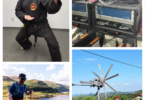by Andre F. S. Melo, Schneider Electric, Spain
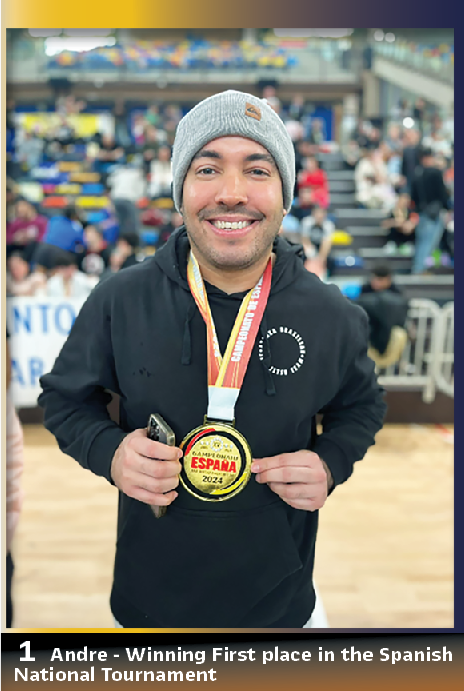
How did I start with Brazilian Jiu-Jitsu: In 2010, when I was at technical school, Mixed Martial Arts (MMA) started to gain popularity around my neighborhood in Brazil due to a few local athletes making their appearances in international events. The two most famous at the time were Renan Pegado (Barão) from a team called Kimura and Patricio Freire (Pitbull) from a team called Kioto. It caught my attention, and I started to watch MMA events on the internet, which led me to learn more about how it all started, dragging me to learn about the origin of MMA.
It turns out that this “aggressive” sport and its most famous event, Ultimate Fighting Championship (UFC), had a very interesting root. It was created by a Brazilian family called the Gracie family. Moreover, the initial intention of the event and its first model were completely different from what I was watching on the internet in 2010. The Gracie family first created it to prove that the martial art they had created, Brazilian Jiu-Jitsu (BJJ), was the most effective martial art in a real fight.
So, I became curious and started to learn about this martial art that claims to be the most effective among all martial arts. After learning about the origin of Jiu-Jitsu, I subscribed for a trial class at a gym near my house, Kimura Zona Norte (KZN). It was an instantaneous connection with the sport; it was much more than what met the eye. The strategy and concepts behind each technique were much more relevant than physical strength. If performed correctly, a smaller person could submit much bigger opponents by applying the leverage concept, and after that, I understood why it was referred to as “The Human Chess.”
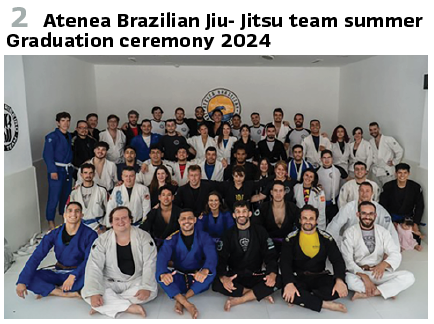
My first Jiu-Jitsu professor, Breno Brigido, was a multi-champion black belt but also a postgraduate professional in physical education. His teaching methodology helped my engineering mind understand the connections between body mechanics and Jiu-Jitsu techniques in a logical and mathematical way. I fell in love with the sport and trained there for almost two years, but then I needed to move to a place closer to the office where I was working at the time, which forced me to stop practicing due to the distance. In the following years, I started to work with Protection, Automation, and Control Systems commissioning and began to travel a lot for my work. I also moved to different cities, countries, and even continents, so I completely quit it for several years. During this time, I tried to practice other sports, but none of them captivated me like Jiu-Jitsu did.
So, in May 2023, when I moved from Seville to Madrid, I found a Jiu-Jitsu academy called Atenea Brazilian Jiu-Jitsu very close to my new place. I then returned to training, and I didn’t stop anymore. Even with a high amount of travel for work, I have been keeping the jiu jitsu as part of my routine even when I’m abroad. Over the past years, the sport grew in such proportion around the world that everywhere I go, I’m able to find a Jiu Jitsu gym to keep training during business trips.(Figure2).

The history of Brazilian Jiu-jitsu (BJJ): BJJ originated in the early 20th century when Mitsuyo Maeda, a Japanese judoka, traveled to Brazil and taught his martial art to Carlos Gracie. Carlos, along with his brothers, particularly Helio Gracie, adapted and refined the techniques to suit their physical capabilities (weaker), emphasizing leverage and ground fighting.
This adaptation led to the creation of Brazilian Jiu-Jitsu. The Gracie family played a pivotal role in popularizing BJJ through their challenge matches, where they would invite practitioners of other martial arts to test their skills against BJJ.
These matches demonstrated the effectiveness of BJJ in real combat situations. The family’s efforts culminated in the establishment of the UFC in 1993, which showcased BJJ to a global audience. Today, Brazilian Jiu-Jitsu is practiced worldwide and is renowned for its focus on technique, strategy, and the ability to overcome larger and stronger opponents through skillful application of leverage and submissions. Figure 3 shows me and Master Renzo Gracie, one of the pioneers of Brazilian Jiu Jitsu and one of the main people responsible for the popularization of the sport around the world.

Why I’m doing it and why you should start: As mentioned before, when I was working as a Protection & Automation Engineer, the amount of travel for projects was very high. In this scenario, it wasn’t easy to maintain a healthy, active routine. As readers of PAC World may know, working with substation commissioning is a challenging and sometimes stressful activity. Since Protection and Automation is usually the last part before the conclusion of the project, any delay or issue during this phase will have a clear impact on the delivery schedule. All delays in previous stages of the project are forgotten, and it is now up to the PAC Engineer to ensure that the project is delivered on time.
Working for several years in a high-pressure environment makes it essential to take care of yourself and try to keep a balance between work and leisure. However, due to my dynamic travel schedule, it wasn’t easy to pick an activity that I could do even while traveling. I love snow skiing, but the logistics are very complicated, and it is not something I can just fit into a time slot during my day. I tried running and gym activities, but these are very repetitive and lack dynamics, which usually makes me bored.
So, when I started a new role in my company as System Architect, I changed from a regional scope to a Global scope, which means that now my activities would include traveling not only in my region but globally. I realized that going back to Jiu Jitsu was the right thing to do. Since it is a very dynamic activity, I can find a Jiu Jitsu gym anywhere around the world, and it is something that I can keep doing at any stage of my life. BJJ is an adaptation of a Japanese martial art where, regardless of the physical capability of the practitioner, the techniques can always be adapted to better fit your physical abilities and limitations.
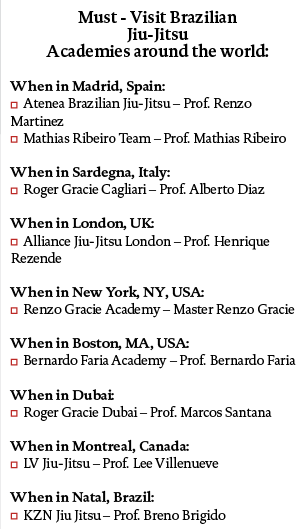
In a Jiu Jitsu class, you will find a young high-performance athlete who lives for the sport, a middle-aged person who works during the day and trains at night, and at the same time, a 70-year-old retired person doing the same sport. (Figure 4a).
In addition to that, beyond physical endurance, martial arts and extreme sports have another advantage over other sports: they build confidence and help with adrenaline control. One of the main fundamentals of martial arts like Jiu Jitsu is self-defense and mental discipline. It teaches patience, problem-solving, and the ability to stay calm under pressure. When a person is put in a situation where they need to fight someone else, it puts the human body in a danger alert state. Your levels of adrenaline increase, and you need to do something to protect yourself. It is one of our most natural human instincts. At this moment, you need to control your adrenaline and start using techniques to end this dangerous situation.
Over time, as you get used to this, you learn how to be comfortable in uncomfortable situations. Your body now knows that you can end a conflict situation, and more than that, it knows what a real conflict situation is. It starts to put other fears that you previously had into perspective. A classic example is the ability to speak publicly to a large group of people. Your body is now somehow used to entering a physical conflict and controlling the adrenaline.
Speaking in public, dealing with a delayed project schedule, or any other situation that used to make you nervous is now just another day in the park. Your body learns how to put things into perspective and knows there is no real reason to be in alert mode.
However, the mental discipline is not only related to your ability to submit or fight against people. I usually say that Jiu-Jitsu is the most efficient way of humbling yourself, because unless your name is Roger Gracie and you are 10-time world champion, it doesn’t matter how good you are, there will always be someone else more experienced and better than you to humble you on the mat. The mental discipline of Jiu-Jitsu is about respecting everybody but fearing nobody.
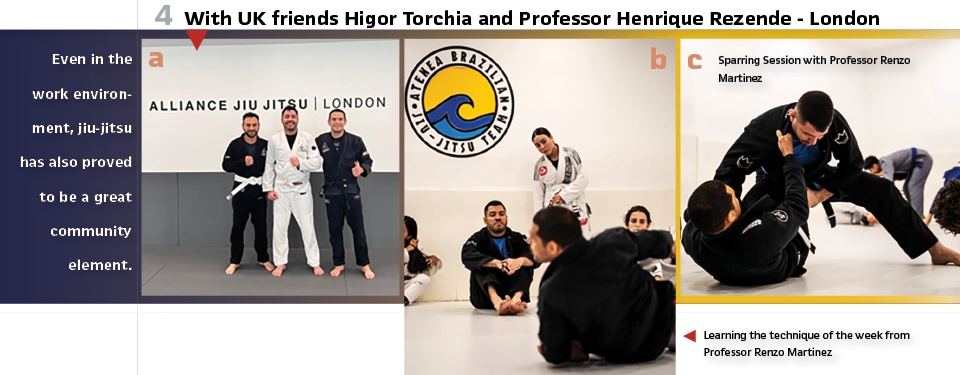
Key Principles of BJJ: Brazilian Jiu Jitsu is a martial art and combat sport that emphasizes grappling and ground fighting. It focuses on using techniques and leverage to control and submit opponents. Practitioners and academies may have different methodologies, focusing on competition, self-defense, or physical fitness and well-being. (Figure 4b).
- Leverage and Technique: BJJ relies on techniques that use the natural body mechanics to generate leverage rather than brute strength. This allows smaller individuals to defend themselves against larger opponents
- Takedowns: Since most BJJ techniques are designed to be performed on the ground, and considering that a real fight starts standing, takedowns are an essential part of Jiu Jitsu. Most takedown techniques either come from martial arts like Judo and Wrestling or are adapted variations of these techniques
- Ground Fighting: As mentioned previously, the majority of the techniques are performed on the ground. Practitioners learn to control their opponents through various positions, either immobilizing them or submitting them. Submissions are techniques that force the opponent to “tap out” due to choking or the threat of injury
- Positional Hierarchy: BJJ has a positional hierarchy that consists of reaching positions where you can get strategic advantages to reach a submission or an immobilization. The time invested in practicing each kind of position will depend on the objective of the practitioner. If they have a competition focus, they will learn positional control based on the scoring values it gives them in a competition. If the focus is self-defense, it will focus on positional control based on a non-jiu-jitsu threat. (Figure 4c).
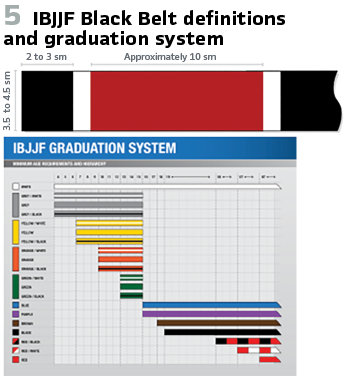
Ranks and General Graduation System: Standardization is also a common aspect of sports and engineering. The International Brazilian Jiu-Jitsu Federation (IBJJF) plays a similar role for Jiu-Jitsu as the International Electrotechnical Commission (IEC) and the Institute of Electrical and Electronics Engineers (IEEE) play for the engineering world. They have defined standards for the rules, the graduation system, and even more detailed aspects of the sport, like the width and length of the belts. (Figure 5).
Article 2 of the general graduation system defines two categories for rank graduation, one for Athletes between 04 to 15 years old and a second for Athletes from 16 years old on. In addition to it, it also defines the minimum age and minimum duration time for each belt. For example, to reach the Red and Black Belt, the athlete shall be at least 50-year-old.
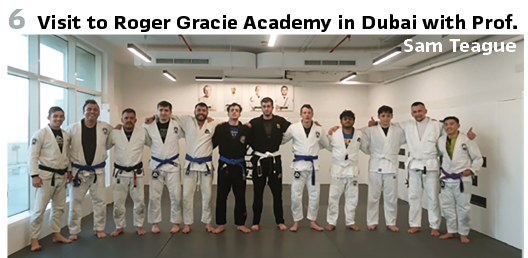
The Jiu-Jitsu around the world and the sense of community: Jiu-Jitsu can be considered a single, large community where even opponents are partners in a way. There is healthy rivalry during championships, but outside of competition, there is a strong sense of friendship. The Jiu-Jitsu community is growing every year, and one of the best aspects for me is meeting people from completely different environments and backgrounds who are also practitioners. As mentioned before, Jiu-Jitsu is one of the most inclusive sports, welcoming people of all genders and ages. Traveling around the world and visiting different Jiu-Jitsu academies, where I am always welcomed, is one of the best experiences.
Even during holidays, there are several Jiu-Jitsu seminars where people from all around the world gather to learn from the best BJJ athletes. Figure 8 shows the Honor Submission seminar organized by the Roger Gracie Academy in Cagliari, where Roger Gracie, the greatest Jiu-Jitsu champion of all time (often compared to Tom Brady or Michael Jordan in the world of Jiu-Jitsu), invites other legends of the sport to join him for a week of teaching Jiu-Jitsu on a paradisiacal beach in Italy. People from all backgrounds, including professional athletes, entrepreneurs, artists, engineers, lawyers, and students, come together to learn about Jiu-Jitsu. Even in the work environment, jiu-jitsu has also proved to be a great community element. Figure 6 shows me and my first manager at Schneider Electric, as well as a great friend, Egberto Moreira, 11 years after my hiring, during a sparring session in Curitiba, Brazil, during one of my business trips back to the Country. If you think about it, (Joke alert) doing Jiu-Jitsu is the only way you can get your former manager choked without being fired.
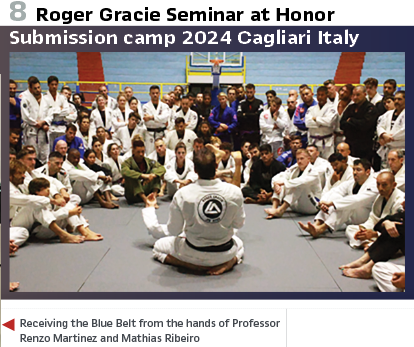
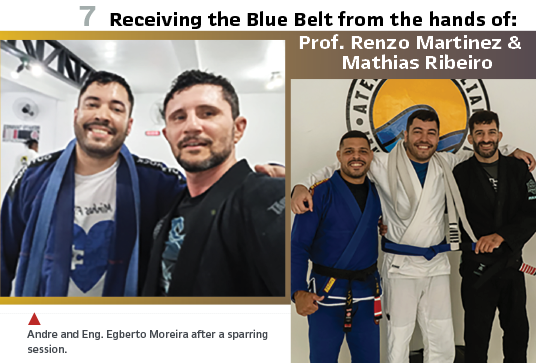
Must-Visit BJJ Academies Around the World: To conclude this article, I would like to drop here my personal list of academies around the world you must visit if you are interested in Brazilian Jiu-Jitsu. (on page 94).
Biography:

Andre F. S. Melo is a Global System Architect at Digital Power Application Center (DPAC) of Schneider Electric. He received the B.E. degree in Computer Engineering from Universidade Potiguar (UnP) in 2017 and the M.S. degree in Electrical Engineering from Universidade Tecnologica Federal do Paraná (UTFPR) in 2021. He is now pursuing Ph.D. degree in Power Systems at Universidad de Sevilla. His fields of interest include Protection and Control System, Digital Substations, and IEC 61850. Mr. André is an IEEE Senior Member and an active member in various work groups of IEC TC57, CIGRE B5, and IEEE PES PSRC & PSCCC.








